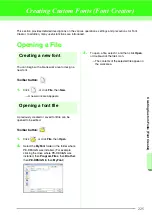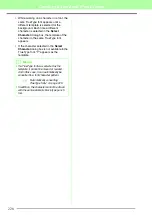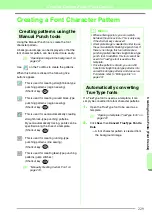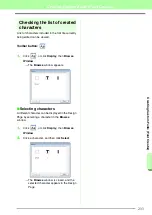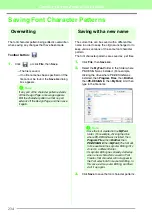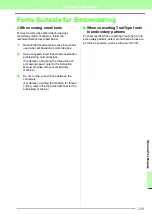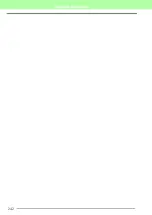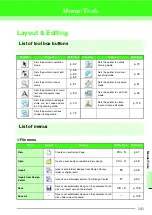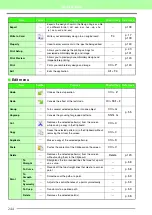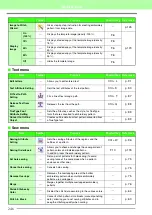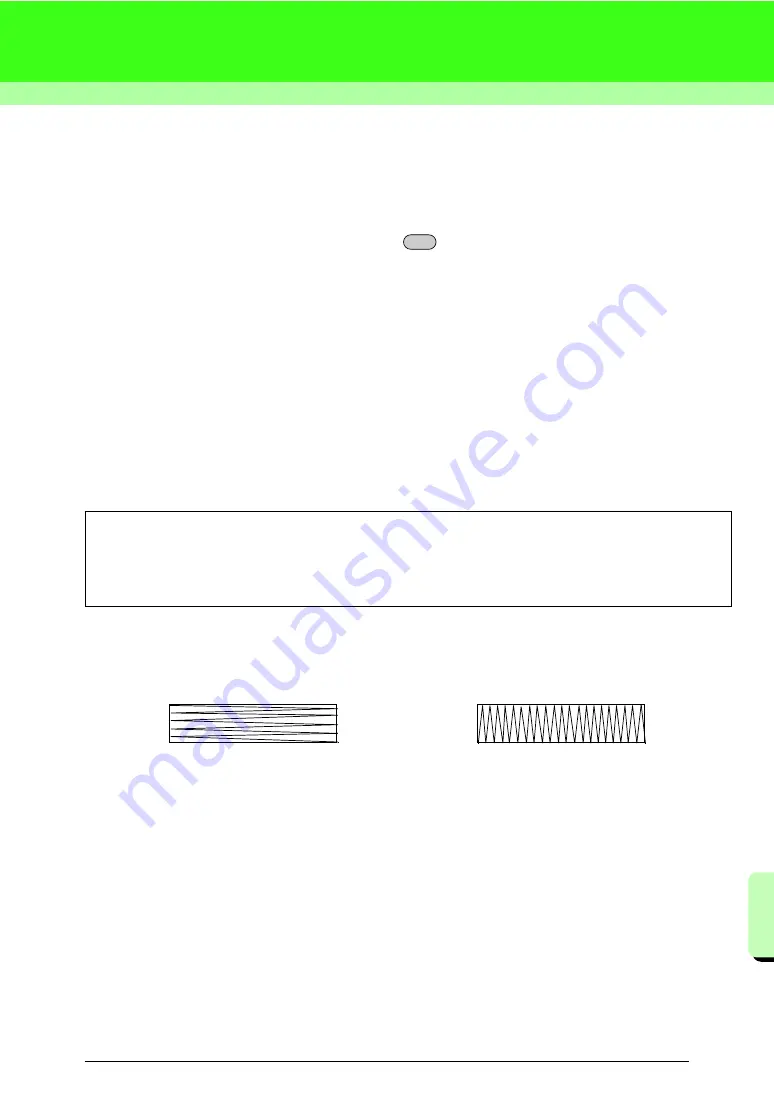
237
Tips
a
nd Te
c
hnique
s
Tips and Techniques
Enlarging/Reducing Stitch Patterns
Imported stitch patterns can be enlarged or reduced in Layout & Editing in the following three ways.
1
Stitch patterns can be simply enlarged/reduced.
2
Stitch patterns can be enlarged/reduced while the
key is held down.
3
Using the Stitch to Block function, stitch patterns can be enlarged/reduced after being converted to a
manual punching pattern.
With method
1
, the stitching will become more dense or light without the number of stitches sewn changing.
In other words, greatly enlarging or reducing the pattern changes the quality of the embroidery since the thread
density is adjusted. Use this method when only slightly enlarging/reducing the stitch pattern.
With method
2
, the size of the pattern is changed while maintaining the thread density and needle drop point
pattern. However, if the original thread density and needle drop point pattern in the stitch pattern are not
uniform, the thread density and needle drop point pattern may not be maintained, even by using this method.
Enlarge/reduce the pattern while checking the preview. Do not use this method when only slightly enlarging/
reducing the stitch pattern.
With method
3
, the thread density is maintained while the pattern is enlarged/reduced. However, the needle
drop point pattern is not entirely maintained. Use this method when you wish to change the stitching or shape.
Do not use this method when only slightly enlarging/reducing the stitch pattern.
Sewing Direction
In order to limit shrinking, select a stitch direction perpendicular to the larger edge of the area.
Sewing Order
After creating an embroidery pattern made of several different parts (in Layout & Editing or Design Center), be
sure to check the sewing order and correct it if necessary.
With Layout & Editing, the default sewing order is the order in which the elements are drawn.
With Design Center, the default sewing order is the order in which the sewing attributes are applied.
This software allows you to create a wide variety of embroidery patterns and supports wider ranges for the
setting of the sewing attributes (thread density, sewing pitch, etc.). However, the final result also depends
on your particular embroidery machine model. We recommend that you make a trial sewing sample with
your sewing data before sewing on the final material. Remember to sew your trial sample on the same
type of fabric as your final material and to use the same needle and the same machine embroidery thread.
Ctrl
Shrinking more likely to occur
Shrinking less likely to occur
Summary of Contents for PE-Design 8
Page 1: ...Instruction Manual ...
Page 146: ...144 Arranging Embroidery Designs Layout Editing ...
Page 200: ...198 Managing Embroidery Design Files Design Database ...
Page 218: ...216 Creating Custom Stitch Patterns Programmable Stitch Creator ...
Page 244: ...242 Tips and Techniques ...
Page 269: ...English ...



